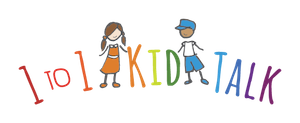A child with nonverbal autism often says their first words after receiving speech therapy for communication skills and after their parents receive training from a speech therapist. Below you will find 9 proven strategies to help minimally verbal children with ASD learn to communicate with spoken language.
1. Turn-Taking And Engagement With A Nonverbal Child
Before a child can be motivated to say their first words, it is important to develop prelinguistic skills of social interaction such as turn-taking and joint attention. In other words, children with autism spectrum disorder, ASD, have little training in the back’n forth structure of conversation. Turn-taking is the back’n forth dance that most babies learn to do with their parents during cooing and nonverbal play. People with autism need to develop these social skills in order to be able to hold exchanges of more than 1 turn or a request. Engaging children with ASD in multiple nonverbal exchanges (5-10 turns) is vital to developing conversation skills.
2. Have Fun!
Having fun is one of the best ways to keep the attention of a child with nonverbal autism. They needed to be enjoying themselves or they will go off and look for something that does offer pleasure, such as a toy. The more social interactions with a person the child has the more a child’s language will develop.
3. Visual Supports For A Child With Nonverbal Autism
Low-tech picture exchange systems and high-tech computerized Alternative Augmentative Communication Systems, AAC, convert spoken language to a static visual code. Unlike what most people believe, children who are provided with a communication device do not decide to communicate with the device instead of their voice. This is mainly because all people will choose the path of least resistance, and it is easier to communicate with your voice than to use an alternative technology.

The AAC device is REALLY for the family to use. I can not emphasize that fact more. When the familiy uses the device, they are converting their spoken language to a visual code that is much easier to understand by their child. Language is easier to process when it is less fleeting-static. Research shows that children with nonverbal autism that have communication devices use spoken language 90% of the time and the device 10%. But, they increase their expressive language significantly.
4. Your Behavior
Be aware that the parent’s behavior impacts a child’s behavior. Are you anticipating your child’s needs and giving them what they need before they have an opportunity to ask? Perhaps they are at the stage where they must communicate nonverbally. If so, the child needs to practice using gestures such as pointing to request and later those gestures become words. If you are not making your child do something to make a request, you may in fact be impeding their need to communicate.
5. Listen to Body Language
Are you doing most or all of the talking? A child with nonverbal autism will likely make gestures to indicate their wants and needs. The gestures can be as subtle as a glance or as clear as grabbing a parents hand. But, if you are not quiet and observant, your child may not have an opportunity to show you what they want.
6. Sing Songs
Music is one of the best ways to connect with a child with Autism, ASD. Sing through out the day. Sing songs you know such as “Head, Shoulder, Knees and Toes” and make up songs for daily routines, “This is the way we wash our hands.”
7. Interests
Look for what draws your child’s interests and use that as activity to motivate them to communicate. Maybe they like swinging, or play dough or drawing and art. All these interests can be used as activities where you imitate their actions and engage with them in activities they enjoy.
8. Follow Their Lead
Let your child with nonverbal child autism dictate what you play with. Let them decide when to start and stop. This aids in getting them to engage with you, if you join them.
9. Looks, Sounds, Partial Words, Words
Children with Nonverbal Autism are notoriously poor at eye contact. That does not mean you should not work on it. Sit face-to-face with your child and look for subtle glances and efforts to look at you as communication. Eye contact is often their first attempt to request. Then, nonverbal individuals may make sounds, then say part of a word (“mm”) and finally single words, “mama.”


